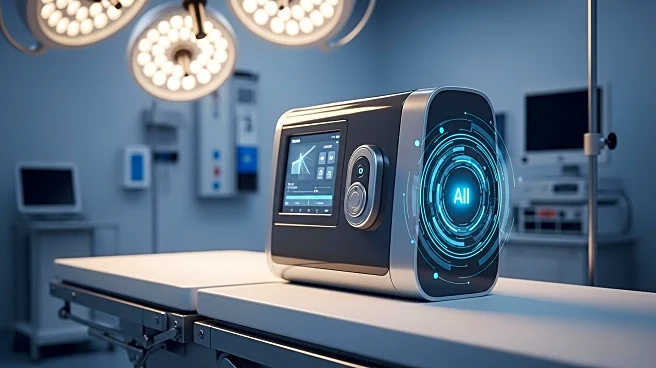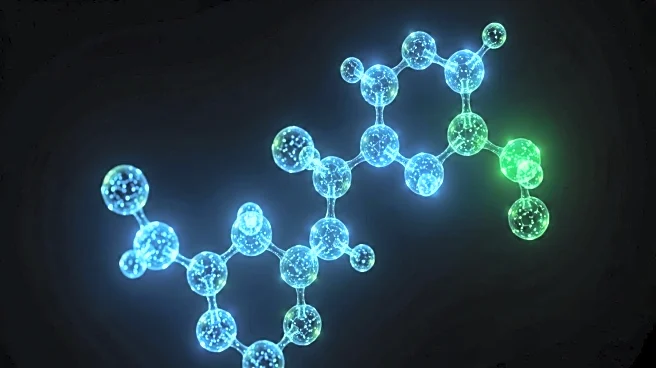What's Happening?
A new wearable biosensing system embedded with a self-confined tetrahedral DNA circuit is revolutionizing chronic wound monitoring. This system integrates multimodal biosensing arrays to detect inflammatory cytokines and growth factors, providing real-time insights into wound healing processes. The self-confined design allows for autonomous signal amplification within hydrophilic regions, enhancing sensitivity and stability. This approach addresses the unique requirements of wound monitoring, including breathability, mechanical stability, and instrument-free operation.
Why It's Important?
The development of soft bioelectronics for wound monitoring is significant for healthcare, offering a non-invasive and efficient method to track healing progress. By providing real-time data on biochemical and biophysical indicators, this technology can improve patient outcomes and reduce healthcare costs. Medical professionals and patients stand to benefit from these advancements, potentially leading to more personalized and effective treatment plans.
What's Next?
The integration of soft bioelectronics into clinical practice is expected to expand, with potential applications in other areas of healthcare monitoring. Further research and development may focus on enhancing the sensitivity and specificity of these systems, as well as exploring new applications in personalized medicine. Stakeholders, including healthcare providers and technology companies, are likely to invest in the development and commercialization of these technologies.
Beyond the Headlines
The use of soft bioelectronics in healthcare raises ethical considerations around data privacy and the potential for personalized medicine to exacerbate healthcare inequalities. As these technologies become more integrated into clinical settings, there will be a need for robust regulatory frameworks to ensure ethical use and equitable access.










